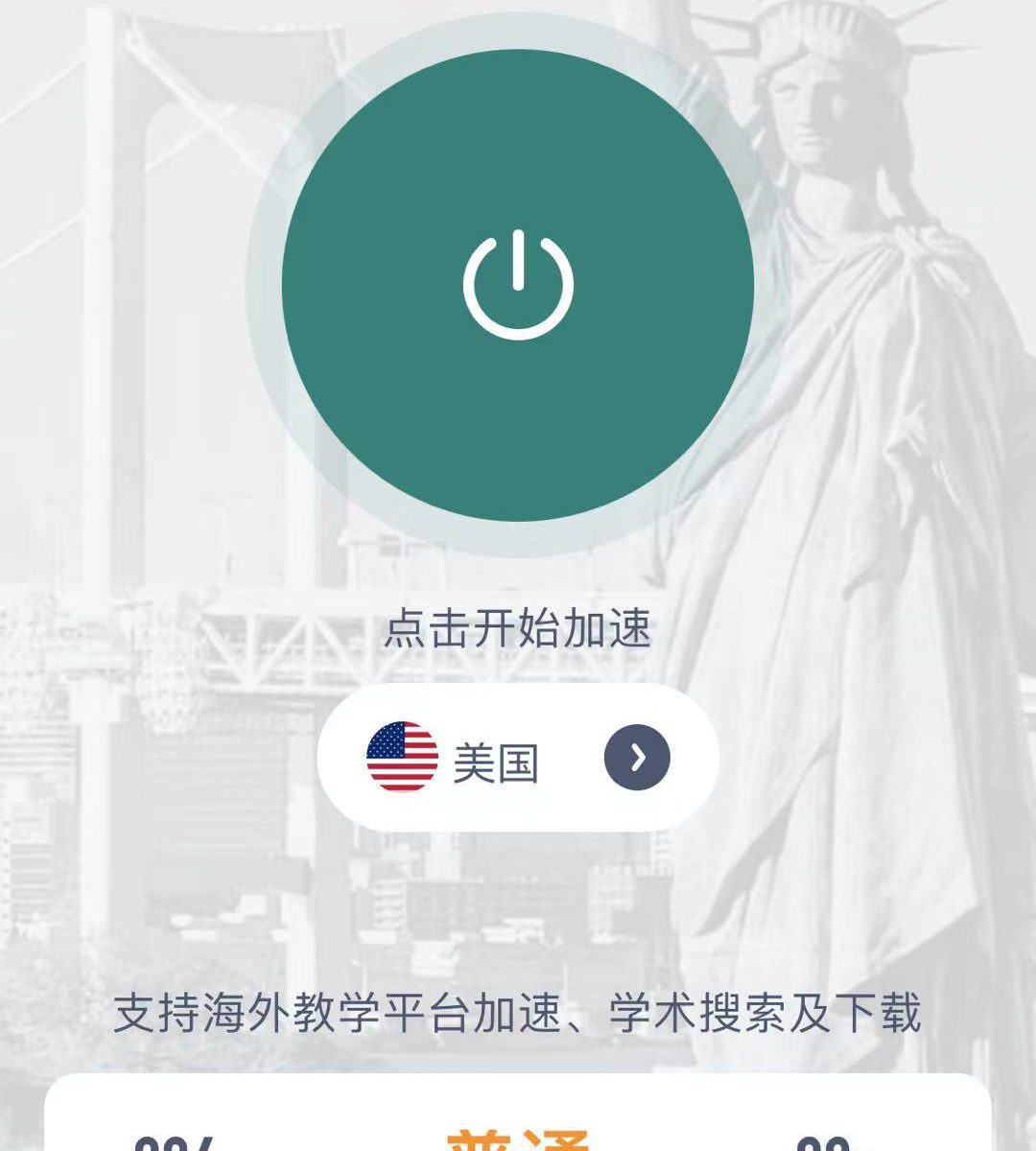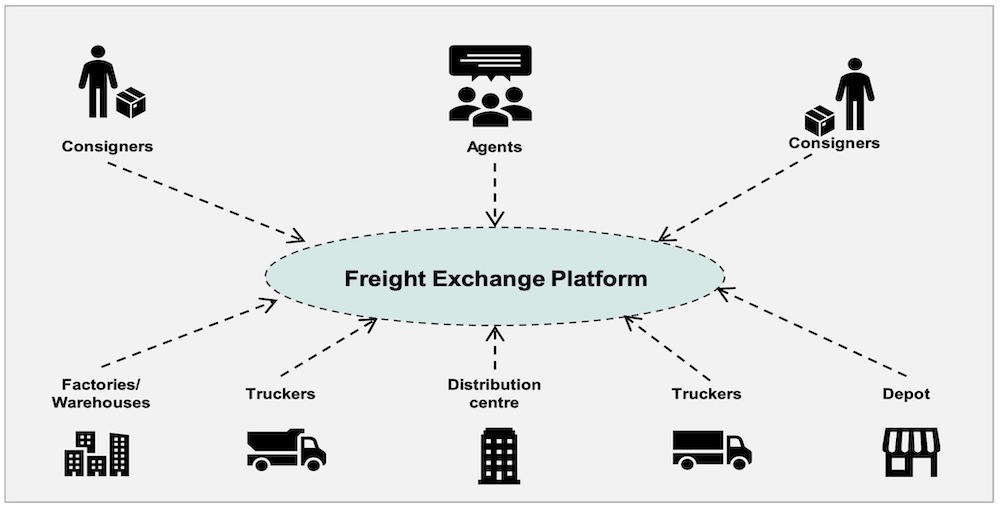The Station is a weekly newsletter dedicated to all things transportation. Sign up here — just click The Station — to receive it every weekend in your inbox.
Hello and welcome back to The Station, a weekly newsletter dedicated to all the ways people and packages move (today and in the future) from Point A to Point B.
For my American readers, you might be traveling — perhaps for the first time in more than a year — because of the Memorial Day holiday. While Memorial Day is meant to honor members of the U.S. military who died while serving, the three-day weekend has become the unofficial kick off to summer. This year, those traveling by car, truck or SUV will be met by the most expensive Memorial Day weekend gas prices since 2014, according to AAA. The organization also estimates that 37 million Americans will travel by plane and automobile over the holiday — a 60% increase over the same period last year.
Be safe out on these busy roads, frens.
One story to highlight: Mark Harris dug into the contracts for the Las Vegas Loop System. He found that restrictions put in place by Nevada regulators are making it difficult for The Boring Company to meet contractual targets for its LVCC Loop, Elon Musk’s first underground transportation system. Shortly after publication, Steve Hill, president of the Las Vegas Convention and Visitors Authority (LVCVA), tweeted that a Loop test this week, with a few hundred participants, had demonstrated its planned 4,400 passenger per hour capacity, which could release $13 million in construction funds currently being held back. While this bodes well for TBC, the story lays out a number of other issues that could pose a challenge for the company. We will continue to dig into this story of tunnels and transport.
Now a request, dear reader. We’re a bit more than a week away from TC Sessions: Mobility 2021, a one-day virtual event scheduled for June 9 that is bringing together some of the best and brightest minds in transportation, including Mate Rimac of Rimac Automobili, Pam Fletcher of vp of global innovation at GM, Scale AI CEO Alexandr Wang, Joby Aviation founder and CEO JoeBen Bevirt, investor and LinkedIn founder Reid Hoffman, whose special purpose acquisition company just merged with Joby, and investors Clara Brenner of Urban Innovation Fund, Quin Garcia of Autotech Ventures and Rachel Holt of Construct Capital.
I’d love for you to join, and you can do that by clicking here and buying a ticket, which will also give you a months-free subscription to Extra Crunch and access to all the videos of the conference. But, if you can’t come, please reach out anyway and let me know if you have any questions or topics that you want addressed. I will be interviewing many of the folks coming to our virtual stage.
We just announced three more participants from automakers Hyundai, Ford and Toyota who will talk about their respective companies’ increasing interest and investment in robotics. Our three guests are: Max Bajracharya, formerly from Alphabet’s X and now vp of robotics at Toyota Research Institute, Ernestine Fu, director at Hyundai Motor Group who heads development at the new New Horizons Studio and Mario Santillo, a technical expert at Ford who has been charged with helping lead the company’s efforts at a recently announced $75 million research facility at the University of Michigan, Ann Arbor.
Email me at kirsten.korosec@techcrunch.com to share thoughts, criticisms, offer up opinions or tips. You can also send a direct message to me at Twitter — @kirstenkorosec.
Micromobbin’

Micromobility rivals Bird and Lime have come out with news this week that they’re both marketing as sustainability initiatives. Let’s start with Bird.
Bird has unveiled its next-generation scooter, the Bird Three, that it will unveil in New York and Berlin this summer. It’s got a longer-range battery with 1kWh capacity and an improved diagnostic monitoring system to keep the battery lasting as long as possible. Bird says its better, smarter battery means it’s ultimately a more sustainable scooter because it has a longer life and needs to be charged a lot less.
Ideally, a better battery and better software will also help produce a longer-lasting vehicle so that Bird can cut down on depreciation and maintenance costs, which have really not helped the company in its push for profitability. Last week, Bird announced a SPAC merger with Switchback II. The regulatory filings that accompanied the announcement demonstrate just how difficult it is to turn a profit given the unit economics of shared scooters.
Lime is similarly positioning its updated subscription service, Lime Prime, as a sustainable initiative. With each new Prime member sign up, Lime promises to plant a tree through One Tree Planted. But more importantly, the subscription service helps the regular Lime rider perhaps save a bit of money. Members have access to waived unlock fees on any vehicle, and in markets with no start fees, the benefit will be 25% off the ride price. Additionally, riders can get free 30 minute reservations on any vehicle.
Two-wheel swag news
Zaiser Motors announced the launch of its Wefunder campaign to raise funds for development and production of its Electrocycle. It’s a good-lookin’ vehicle, charcoal-black with a design that breaks away from a super traditional gasoline-era style and looks more like something a small Batman might ride. All of the components are designed to be recyclable within the first 10 years of production, the company says. The Electrocycle has 300 miles of range, swappable batteries and is less than $25,000.
Meanwhile in scooter world, the Scotsman, a Silicon Valley-based electric scooter brand, has unveiled a scooter that’s 3D printed entirely in carbon fiber composite. And I don’t just mean some parts are composite. The whole frame, the handlebars, the stem and the baseboard are all made of this strong, sustainable, lightweight material. It also means the scooters are highly customizable, each frame printed depending on the owner’s height, weight, arm and leg lengths and riding position. At a starting price of $2,999, it’s not cheap, but that might be a signal from the industry that scooters are increasingly become viable transport options and not just toys. You can pre-order here.
— Rebecca Bellan
Deal of the week

The march of IPOs appears to picking up pace. For instance, Full Truck Alliance, the Chinese digital freight platform known as Manbang Group, filed for an IPO. The filing didn’t specify the exact amount it was aiming to raise. Reuters, citing unnamed sources, reported that the company wants to raise up to $1.5 billion, which would give it a valuation of $20 billion.
Full Truck Alliance’s S-1 provides a number of interesting details, including the how much money can be captured by effectively connecting truckers with shippers. The company reported that about 20% of all China’s heavy-duty and medium-duty truckers fulfilled shipping orders on our platform in 2020. (More than 2.8 million truckers fulfilled shipping orders on its platform last year.) Full Truck Alliance said last year it facilitated 71.7 million fulfilled orders with a gross transaction value of RMB173.8 billion (US$26.6 billion). The first quarter number show it is growing. In the first quarter, the company had 22.1 million fulfilled orders, a 170.2% increase from the same period.
Full Truck Alliance raised $3.6 billion in private funding, most recently last fall at an $11.7 billion valuation, from firms like SoftBank Vision Fund (22.2% pre-IPO stake), Sequoia Capital China (7.2%), Permira, Tencent, Hillhouse Capital, GGV Capital, Lightspeed China Partners and Baillie Gifford.
The IPO about six months since the company raised $1.7 billion in a funding round that included backing from SoftBank Vision Fund, Sequoia Capital China, Permira, Fidelity, Hillhouse Capital, GGV Capital, Lightspeed China Partners, Tencent and Jack Ma’s YF Capital. A look at the S-1 shows that the principal shareholders are Softbank with a 22.2% stake, followed by 8.9% held by Full Load Logistics, a limited liability company owned by Full Truck Alliance CEO Hui Zhang. Sequoia has a 7.2% stake and Master Quality Group Limited, another organization controlled by Zhang, hold 6.6% of shares.
Other deals that got my attention this week …
E2open Parent Holdings Inc. said it will acquire logistics execution platform BluJay Solution, Freightwaves reported. The deal could be valued at $1.7 billion, consisting of $760 million in cash and 72.4 million shares.
First Move Capital, the Boulder-based venture firm that has invested in used car marketplaces Frontier Auto Group and Vroom as well as mobility-as-a-service startup Via, has closed a new $150 million fund that will focus on the automotive and transportation sectors. Proceeds from the round will be exclusively allocated to new investments; seven have already been made, including into autonomous vehicle startup Gatik, cloud-based automotive retail platform Tekion and e-commerce startup Revolution Parts.
Hydra Energy received CAD$15 million ($12 million) from Just Business to expand beyond pilots and deliver hydrogen-powered trucking, the company announced. This funding is to support the further development of Hydra’s initial waste hydrogen capture plant in British Columbia, its fueling infrastructure and conversion kits. The Canadian company has raised CAD $22 million (USD $17.2 million) to date. One other update worth sharing, Hydra’s flagship hydrogen-as-a-service project, is scheduled to break ground later this year.
Miles, the German car-sharing service has received investment from Delivery Hero CFO Emmanuel Thomassin, HelloFresh CFO Christian Gärtner, Chargepoint CFO Rex Jackson as well as Norwegian top manager Stine Rolstad Brenna. Thomassin has joined the company’s advisory board. The company disclosed to TechCrunch that it generated 20 million euros ($24.39 million) of revenue in 2020, quadruple the amount from the previous year. The results helped the company achieve profitability in October 2020. Miles is now focused on expansion. In the first four months in 2021, the company launched electric vehicles and expanded its car fleet to Munich. Miles intends to grow beyond Germany and is currently examining the best markets to launch in.
MotoRefi raised another $45 million in a round led by Goldman Sachs just five months after investors poured $10 million into the fintech startup to help turbocharge its auto refinancing business. While the company didn’t give me specifics on its revenue — CEO Kevin Bennett cited a 7x growth year-over-year but didn’t provide the baseline — it did disclose it’s on track to issue $1 billion in loans by the end of the year. That’s a fivefold increase from the same period last year.
Smart Eye, the publicly traded Swedish company that supplies driver monitoring systems for a dozen automakers, acquired emotion-detection software startup Affectiva for $73.5 million in a cash-and-stock deal. The startup, which says it developed software that can detect and understand human emotion, spun out of MIT Media Lab in 2009. Since then, it has landed a number of development and proof of concept deals as well as raised capital, but it never quite reached the mass-scale production contracts.
That’s where Smart Eye comes in. Smart Eye, which has won 84 production contracts with 13 OEMs, including BMW and GM, is keen to combine with its own AI-based eye-tracking technology. The companies’ founders see an opportunity to expand beyond driver monitoring systems — tech that is often used in conjunction with advanced driver assistance systems to track and measure awareness — and into the rest of the vehicle. Together, the technology could help them break into the emerging “interior sensing” market, which can be used to monitor the entire cabin of a vehicle and deliver services in response to the occupant’s emotional state.
Tritium, a Brisbane-based developer and producer of direct current fast EV chargers, announced a merger agreement with a special purpose acquisition company Decarbonization Plus Acquisition Corp. II. The deal is expected to value the company at $1.2 billion. The transaction is expected to generate gross proceeds of up to $403 million. Tritium will be listed under the ticker “DCFC.”
This particular SPAC deal is unusual in that it does not include private investment in public equity, or PIPE — a fundraising round that typically occurs at the time of the merger and injects more capital into the company. Tritium CEO Jane Hunter told us that the company didn’t need a PIPE because DCRN is a more than $400 million SPAC and its shareholder group agreed to a minimum cash closing of just $200 million, which significantly reduces redemption risk. “Also, our revenue has grown at a compound annual growth rate (CAGR) of 56% since 2016 as we expand our presence in major markets where we have a significant market share, such as the U.S. and Europe,” Hunter said. “This revenue growth helps to reduce our reliance upon new funds to implement our growth strategy.”
Wejo, the connected vehicle data startup backed by GM and Palantir, plans to go public through a merger with special purpose acquisition company Virtuoso Acquisition Corp. The agreement, announced in a regulator filing, will give the combined company an enterprise valuation of $800 million, which includes debt. There were earlier reports that the SPAC deal was imminent. The filing confirms the news and provides more detail.
The deal raises $330 million in proceeds for Wejo, including a $230 million cash contribution from Virtuoso and a $100 million in private investment in public equity, or PIPE. Previous strategic investors Palantir and GM anchored the transaction, according to Wejo. The company did not disclose the amounts of those investments. Current shareholders will retain 64% ownership of the company, according to its investor deck.
Policy corner

Senate Republicans released their response to Joe Biden’s sweeping $2 trillion investment plan, which would earmark $174 billion for electric vehicle investments. Their proposal would shrink it down to $928 billion. And that $174B for EVs? That would be reduced to just $4 billion, under the GOP plan.
It seems that the main point of contention between the President and his GOP colleagues is the definition of the word ‘infrastructure.’ Republicans are sticking to a more traditional definition, so their counterproposal still contains plenty of money for things like roads, the water system, bridges and broadband.
Biden’s plan aimed to provide consumer tax incentives and incentives for EV chargers, incentives to boost domestic manufacturing and enough funds to install at least 500,000 public charging stations across the country by 2030. A memo obtained by The Hill suggests Biden intends to hold firm to his proposal, so expect further negotiations in the coming weeks.
The Senate Finance Committee on May 26 marked up the Clean Energy for America Act, an important step before it hits the Senate floor for a vote. Among other things, the bill would remove 200,000 unit cap on tax credits for consumers buying EVs — that means the tax credit could be used toward buying a Tesla, a manufacturer that hasn’t been eligible for the credit because they’ve sold over 200,000 cars in the United States.
Sen. Debbie Stabenow (D-MI) added an amendment to the bill that would create an additional $2,500 consumer credit for vehicles assembled in the U.S. and another $2,500 for vehicles assembled in a unionized facility. If it passes, the additions would bring the maximum consumer tax credit for EVs to $12,500 — no small sum! The credits would expire in 2025. “Electric vehicles are part of our transportation future,” Sen. Stabenow said. “The question is not when they will be built, it’s where they will be built: in Asia or America?”
U.S. Energy Secretary Jennifer Granholm sold her holdings in electric bus manufacturer Proterra after Republicans criticized her for a potential conflict of interest. The GOP’s complaint arose after Biden made a virtual visit to a Proterra factory in April. The sale provided Granholm with a net gain of $1.6 million, DOE told reporters.
— Aria Alamalhodaei
A little bird

I hear and see things, but we’re not selfish. Let me share.
This week, “a little bird” is all about big employment moves and departures and how one hire is connected to a potentially massive IPO.
Let’s kick things off with Celina Mikolajczak, the now former vice president of battery technology at Panasonic Energy of North America. You might recall that Mikolajczak recently took a board seat at solid state battery company QuantumScape. Welp, she is now taking a job at the company as vice president of manufacturing engineering, beginning in July. She has resigned from the board in connection with accepting the offer. In her new role, Ms. Mikolajczak will lead the transition of the Company’s tools and manufacturing processes from research and development to production, QuantumScape said in a regularly filing.
Mikolajczak has a long history researching and developing better lithium-ion batteries. Her technical consulting practice at Exponent focused on lithium-ion cell and battery safety and quality. She then took a senior management position at Tesla that was focused on cell quality and materials engineering. During her time at Tesla, Mikolajczak developed the battery cells and packs for Tesla’s Model S, Model X, Model 3 and Roadster Refresh.
After leaving Tesla, Mikolajczak went on to serve as director of engineering focused on battery development for rideshare vehicles at Uber Technologies. And in 2019, she joined Panasonic Energy of North America, where she is vice president of battery technology. While at Panasonic, Mikolajczak led a team of more than 200 engineers and other technical staff to improve lithium-ion cell manufacturing and to bring the latest cell technologies to mass production for Tesla at the Gigafactory facility in Sparks, Nevada.
Speaking of Tesla … it looks like Scott Sims, director of engineering, left the company this month. His title doesn’t quite capture his role. Sims was the person leading the design and engineering for vehicle user interfaces, streaming, video games and mobile applications. Importantly, he was responsible for cloud computing as it related to the Tesla mobile app, a critical tool for any owner.
Finally, the big news on Friday (via Bloomberg) is that Rivian has selected underwriters for an initial public offering. The company could seek an eye-popping value of $70 billion. I have confirmed some (but not all) of Bloomberg’s reporting. Obviously big news that I’ll be watching and digging into. I had heard rumbling about a potential Rivian IPO, but Bloomberg put together the critical deets.
To me, the biggest indication that Rivian was getting ready to make a move was Ger Dwyer taking the vp of business finance position at the company, which he posted about on LinkedIn. You might recall, that I scooped the news a couple of weeks ago that Dwyer was leaving his post as CFO at Waymo. I noted at the time that Dwyer’s departure comes at a time when the demand for CFOs has rocketed alongside the continuous string of public offerings, including those done via mergers with special purpose acquisition companies.
Got tips? Send them my way by email or DM me over at Twitter.
Notable reads and other tidbits

Loads and loads of news. Let’s get to it.
Autonomous vehicles
Aurora published a blog post that gives a few new details on its testing and self-driving trucks strategy in Texas. The autonomous vehicle company said its first commercial pilots will move goods on several “middle-mile” routes in Texas. A safety driver will be behind the wheel of these self-driving trucks, which will drive autonomously between hubs. The terminal or hub system is one that other AV companies have adopted — at least for now. The idea is that loads can be consolidated, which would theoretically make operations more efficient. Aurora did add, that “for shippers and carriers with existing hubs and large volumes of freight, we expect to ultimately drive the complete route with no need for an intermediate consolidation point.”
One other item that jumped out to me: the company is expanding into a second office in Texas, suggesting that they’re scaling up, at least in terms of people.
Germany’s lower house of parliament adopted legislation that will allow driverless vehicles on public roads by 2022, laying out a path for companies to deploy robotaxis and delivery services in the country at scale. While autonomous testing is currently permitted in Germany, this would allow operations of driverless vehicles without a human safety operator behind the wheel. The bill still needs to pass through the upper chamber of parliament, or the Bundesrat. Included in the bill are possible initial applications for self-driving cars on German roads, such as public passenger transport, business and supply trips, logistics, company shuttles that handle employee traffic and trips between medical centers and retirement homes.
PAVE, which stands for Partners for Autonomous Vehicle Education, piloted a workshop with local governments earlier this month throughout Ohio. The educational workshop, which was done in partnership with Drive Ohio, wasn’t open to the public. But my Autonocast podcast co-host Ed Niedermeyer, who also happens to be director of communications for PAVE, gave me the inside scoop on what went down.
PAVE says it doesn’t do any kind of policy advocacy; instead the aim is to arm public policymakers with the facts they need to make good policy. This pilot helped PAVE lay a foundation for a curriculum that can be used elsewhere; that might seem trivial, but the complexity of issues around AVs makes these workshops with elected officials potentially powerful tool.
Ed told me that one of the main challenges was educating on potentially controversial topics, like policy and regulation, “where we have to get facts across without imparting biases.” He noted that the organization’s public sector and academic advisory councils were both helpful as neutral authorities. Finally, he said that one of the most practical education PAVE did was around the best practices that its members and advisors have developed in early AV deployments.
Kodiak Robotics, the U.S.-based self-driving truck startup, is partnering with South Korean conglomerate SK Inc. to explore the possibility of deploying its autonomous vehicle technology in Asia. While Kodiak co-founder and CEO Don Burnette couched the initial agreement as a first step toward a commercial enterprise in Asia, the reach of SK shouldn’t be discounted. SK Inc., a holding company of SK Group, has more than 120 operating companies, including ones connected to the logistics industry.
The ultimate aim of the partnership is to sell and distribute Kodiak’s self-driving technology in the region. Kodiak will examine how it can use SK’s products, components and technology for its autonomous system, including artificial intelligence microprocessors and advanced emergency braking systems. Both companies have also agreed to work together to provide fleet management services for customers in Asia.
Electric vehicles
Ford Motor, fresh off its splashy F-150 Lightning electric truck reveal, announced it is pushing its investment in EVs up to $30 billion by 2025, up from a previous spend of $22 billion by 2023. The company announced the fresh cashflow into its EV and battery development strategy, dubbed Ford+, during its investor day.
The company said it expects 40% of its global vehicle volume to be fully electric by 2030. Ford sold 6,614 Mustang Mach-Es in the U.S. in Q1, and since it unveiled its F-150 Lightning last week, the company says it has already amassed 70,000 customer reservations.
Hyundai held the North American reveal of the upcoming all-electric Ioniq 5 crossover. One new detail that I found interesting: Hyundai developed an in-car payment system that will debut in the Ioniq 5. The feature will offer drivers the ability to find and pay for EV charging, food and parking. When the vehicle comes to North America in fall 2021, the payments system will launch with Dominoes, ParkWhiz and Chargehub.
Lordstown Motors’ cash-rich SPAC dreams have turned out to be nothin’ more than wishes, as Alex Wilhelm and Aria Alamalhodaei reported. The upshot: a disappointing first-quarter earnings that was a pile-up of red-ink-stained negativity. The lowlights include higher-than-expected forecasted expenses, a need to raise more capital and lower-than-anticipated production of its Endurance vehicle this year — from around 2,200 vehicles to just 1,000. In short, the company is set to consume more cash than the street expected and is further from mass production of its first vehicle than promised.
Lucid Motors revealed the in-cabin tech of its upcoming electric luxury Air sedan. I spoke to Derek Jenkins, who heads up design at Lucid, and he provided a detailed tour of all the tech in the vehicle. It goes far beyond the curved 34-inch display and second touchscreen, which received much of the attention. The user experience, particularly the underlying software, matters in all cars. But it can be the death of an electric vehicle model if not done properly.
It appears Lucid is on the right track. I won’t really know until I’m able to test the Air. Let’s hope that is soon.
Rivian has delayed deliveries of the R1T Launch Edition, the limited edition release of its first series of “electric adventure vehicles,” by a month. Customers who preordered can now expect to start receiving their pickup trucks in July instead of June, with Launch Edition deliveries to be completed by spring 2022. The one-month delay was due to a combination of small issues, including delays on shipping containers, the ongoing chip shortage as well as ensuring the servicing piece is properly set up. It’s worth noting that Rivian told me that it has been largely unaffected by the chip shortage compared to the rest of the industry because its products don’t require as many as other vehicles on the market today.
Tesla had a number of news items this week, so I’ll just point to the most notable ones. Tesla has established a data center in China to carry out the “localization of data storage,” with plans to add more data facilities in the future, the company announced through its account on microblogging platform Weibo. All data generated by Tesla vehicles sold in mainland China will be kept domestically. The move was in response to new requirements drafted by the Chinese government to regulate how cameras- and sensors-enabled carmakers collect and utilize data. One of the requirements states that “personal or important data should be stored within the [Chinese] territory.”
Finally, two safety-related pieces of Tesla news that seem in opposition to each other.
First, Tesla started delivering Model 3 and Model Y vehicles without radar, fulfilling a vision of CEO Elon Musk to only use cameras combined with machine learning to support its advanced driver assistance system and other active safety features. The decision has prompted blowback though from the National Traffic Highway and Safety Administration, Consumer Reports and IIHS over safety concerns.
Meanwhile, Tesla finally — and after loud and frequent urging from industry and safety advocates, activated the in-cabin camera in new Model Y and Model 3 vehicles. The camera will be used as a driver monitoring system. Tesla has been criticized for not activating the driver monitoring system within its vehicles even as evidence mounted that owners were misusing the system. Owners have posted dozens of videos on YouTube and TikTok abusing its advanced driver assistance system known as Autopilot — some of whom have filmed themselves sitting in the backseat as the vehicle drives along the highway.
Other nugs (no not that kind)
Apex.AI hired Paul Balciunas as its CFO. Balciunas was the former CFO of Canoo. He also was an executive at Deutsche Bank, where he acted as a lead underwriter of the initial public offering for Tesla in 2010, and has since focused on auto tech and new mobility players.
Blyncsy, a Utah-based startup movement and data intelligence company launched an AI-powered technology called Payver, that will use crowdsourced video data to give transport agencies up-to-date information on which roads require maintenance and improvements. Blyncsy is offering this service to governments at a reduced cost and with no long-term commitment. Utah’s DOT will be the first to pilot the program beginning June 1, deploying Payver in the Salt Lake County region, which covers more than 350 road miles. Blyncsy will be announcing other pilots in different states over the next few weeks.
Scale AI hired Mark Valentine to head up its federal-focused division. Valentine comes with experience and connections. He was a commander in the U.S. Air Force, senior military advisor to FEMA and most recently, GM of national security for Microsoft. He will lead Scale’s government partnership efforts.
Scale has also hired Michael Kratsios, the former CTO of the White House, as managing director and head of strategy. The company said he is focused on accelerating the development of AI across industries. Michael joined at the end of Q1.

Source: Tech Crunch



















